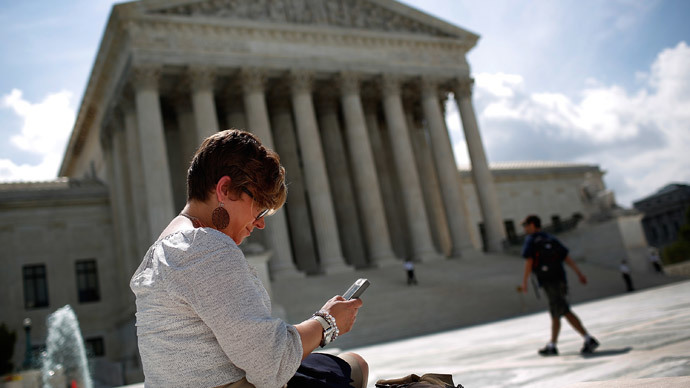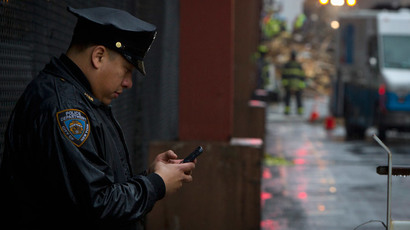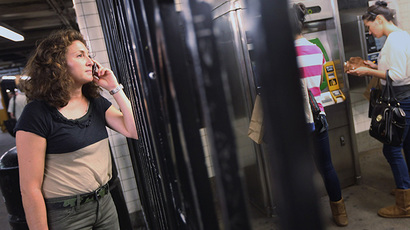Mysterious unidentified spying cell towers found across Washington, DC

Washington, DC is littered with surveillance devices designed to trick surrounding mobile phones into logging onto signal-lifting networks, thereby allowing for tracking or call-monitoring purposes.
While traveling around the capital city with Washington Post reporters, a top executive using his company’s mobile-security technology detected as many as 18 such devices mimicking legitimate cell towers around the city, especially in sensitive areas around the likes of the White House, the US Capitol building, and foreign embassies.
Aaron Turner’s company Integricell is one of many outfits that has developed technology to indicate surveillance devices - known as ISMI catchers - used by police, intelligence entities, private individuals, and others to track surrounding devices or to even spy on phone calls.
ISMI catchers are named after a “unique identifying phone code called an ISMI,” according to the Post, and can hijack phone signals, tricking an average mobile phone attempting to hook into established cell networks such as Verizon or AT&T.
While Integricell found at least 18 such ISMI catchers, others believe that is simply the beginning.
“I think there’s even more here,” said Les Goldsmith, top executive with ESD America, a tech company partnering with Integricell to promote the company’s GSMK CryptoPhone. “That was just us driving around for a day and a half.”
Others expressed doubt to the Post that the CryptoPhone - currently marketed at $3,500 apiece - can accurately identify individual ISMI catchers.
“I would bet money that there are governments that are spying in DC,” said Christopher Soghoian, principal technologist for the American Civil Liberties Union. “Whether you can detect that with a $3,000 device, I don’t know.”
Goldsmith said that though there are ISMI catchers in the locations identified by Integricell’s technology, CryptoPhone cannot very well determine the source of espionage, whether it is the US government, local police, a foreign intelligence entity, or an individual.
The Federal Communications Commission has taken notice of ISMI-catching technology, as even skilled hobby technologists could build a surveillance device for less than $1,500. This summer, the FCC organized a task force to study potential use and abuse of ISMI catchers by foreign governments or private citizens. The FCC does not have authorization to police US government use of the catchers - which are illegal to use without a search warrant or other legal clearance.
Meanwhile, researchers across the globe are racing to counter ISMI catchers with a device known as “ISMI catcher-catcher.” These efforts include the development of free or inexpensive apps that could offer some protection from surveillance.
CryptoPhone looks for three indicators when attempting to identify an ISMI catcher: when a phone moves to a 2G network from a more-secure 3G one; when a phone connection “strips away” encryption; and when a cell tower does not offer a “neighbor’s list” of other cell towers in the area. ISMI catchers will not provide such lists, hoping to capture any phone that it comes in contact with in a general area.
When cruising around DC with the Post, Integricell’s Turner reported one or two of the three indicators. Only once in 90 minutes were all three indicators detected.
While there is a surge of interest in the likes of the CryptoPhone, researchers contend that makers of IMSI catchers will boost their own technology to outwit ISMI catcher-catchers, signaling an arms race in surveillance and counter-surveillance technology.
Earlier this month, Popular Science published a story - citing ESD America’s CEO Goldsmith - reporting that the CryptoPhone had found 17 different fake cell phone towers, or interceptors, across the United States in cities such as New York, Chicago, Los Angeles, Seattle, and more.
“Interceptor use in the US is much higher than people had anticipated,” Goldsmith told Popular Science. “One of our customers took a road trip from Florida to North Carolina and he found 8 different interceptors on that trip. We even found one at South Point Casino in Las Vegas.”
Although these interceptors act as fake cell phone towers, they are not necessary large, physical structures. They could simply be small mobile devices that act exactly like a real tower, deceiving phones into giving up information. Such devices are known as ‘Stingrays,’ after the brand name of one popular type of interceptor.
Police agencies across the country are increasingly relying on Stingrays to conduct investigations, but the powerful tools aren’t often discussed in public.
In June, the US Marshals Service intervened in a dispute between a Florida police department and the state’s ACLU chapter, with the Marshals sweeping in at the last minute to seize controversial cell phone records obtained with a Stingray device before the ACLU was able to review them.
The ACLU has asserted that a Stingray enables the “electronic equivalent of dragnet ‘general searches’ prohibited by the Fourth Amendment,” and convinced a court to force the Sarasota police to make the documents available for review.














